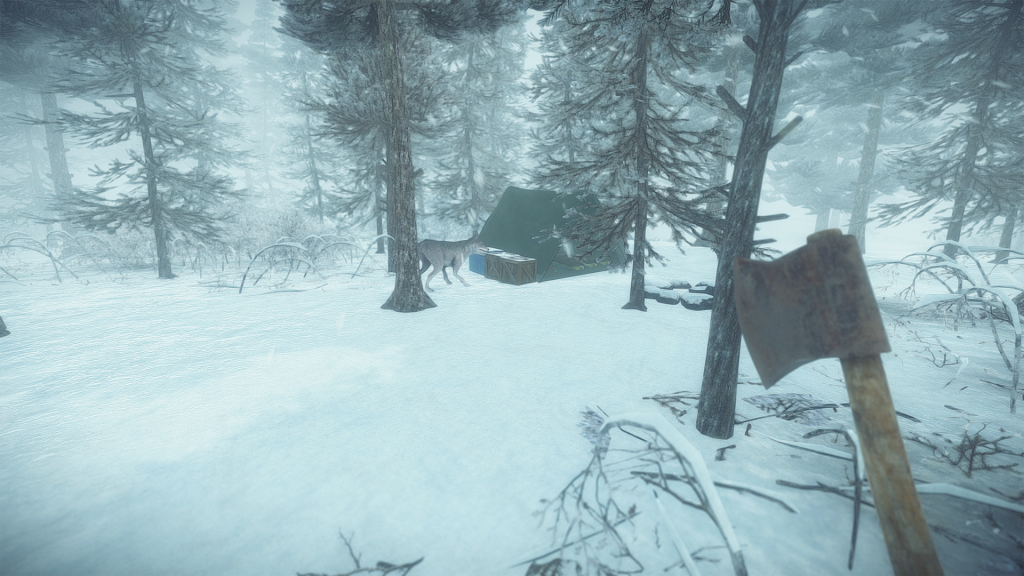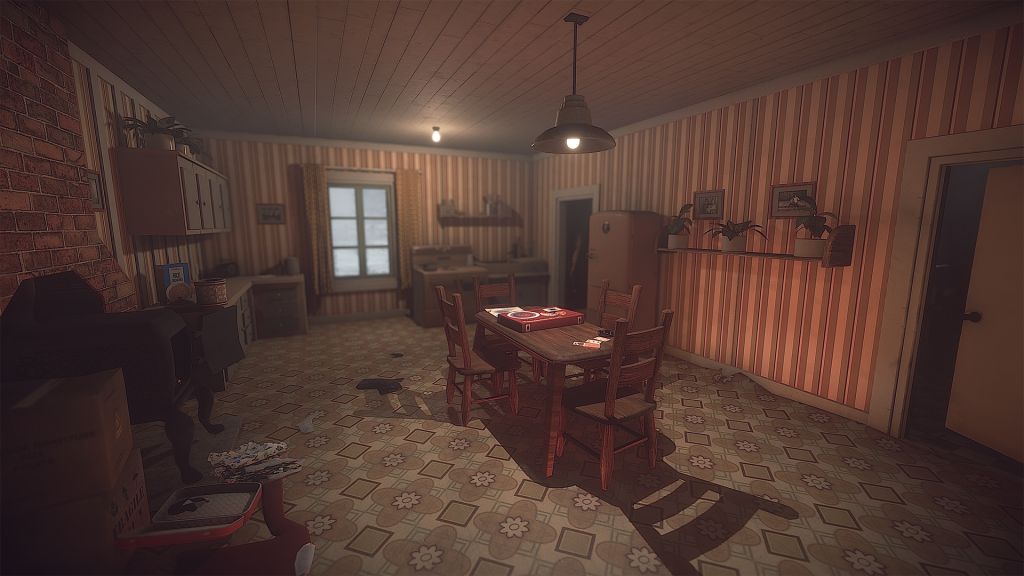Walking simulators, it’s a term that’s either liked or despised in the gaming community. For those who don’t know what the term means, it’s used to describe games that focus on story and narration rather than actual gameplay or interaction. Most famous game titles within this genre are Gone Home, Everybody’s Gone to the Rapture and Firewatch. These games let you walk around in an immersive setting and require you to find items or solve puzzles in order to progress the story. Kona, developed by Parabole, is not much different.
Murder mystery
Kona takes place in the Canadian wilderness in 1970. You play as private detective Carl Faubert and are contacted by a local businessman who wants you to investigate a case of vandalism. After a car accident, you find the cold corpse of your contractor and now have to find out what exactly happened. The game starts out as a typical murder mystery, but after playing for a while you’ll soon realize that some things are not what they seem to be. The plot of Kona is told at a steady pace most of the time and knows how to hook you in. It’s also told in multiple ways, like in most walking simulators. There’s Carl’s journal, which adds some background stories from certain points of interest, like a store or a cave. Some points of interest can also be photographed with your trusty Polaroid camera, which are then stored as ‘evidence’ and can help refresh your memory when the story gets a little confusing. Lastly, there’s the narrator who adds some extra charm and depth to the plot. Too bad that the ending is basically a plot exposition dump and finishes the story in a rather clumsy way. However, the journey towards the end is worth your time.
Survival and puzzles
The gameplay in Kona can be described as a survival-puzzle game. Like I said earlier, Kona takes place in the Canadian wilderness in 1970 during a blizzard. Staying too long outside will drop Carl’s body temperature and eventually kill him. You can warm yourself up by lighting wood stoves or by sitting in your truck if you remember to fill it up with gas. But the harsh cold isn’t the only danger Carl has to face. There are also feral wolves and other creatures who are out to kill you. You can equip Carl with several weapons to defend himself against the beasts, ranging from a mere axe to firearms. While the combat in Kona is not exactly deep, it does help to immersive yourself into its setting, making it feel more realistic. There are dangers you have to deal with and it won’t be easy. It’s best to avoid any predator you come across, but be sure to carry a weapon with you at all times. You never know what might happen next.
Like any other walking simulator, there are some puzzles to be solved in Kona. Some of them are as simple as ‘find the key that fits this lock’, others are a little more complex, or rather, SEEM more complex. The puzzles in Kona are not that difficult. In fact, they are fairly simple. Even the puzzles that aren’t needed to complete the story are easy to solve. The only challenging thing about the puzzles is the annoying white dot that you have to aim perfectly at the object you want to interact with. Want to close that cupboard you opened earlier? Better stand perfectly still in front of it or otherwise, you can’t close it. Solving puzzles is a frustrating chore when you can’t interact properly with them, which is problematic for a game like Kona, where solving puzzles makes up for 50% of the gameplay. Luckily, most puzzles don’t require a lot of interaction, so you won’t spend too much time on aiming that white dot at objects.
Fantastic immersion
The world of Kona is well-crafted and greatly detailed. The trees each blow individually in the wind, the creatures sound like they are actually next to you and each house or store you come across can tell its own story by simply looking at the little details inside it. The snowstorms are a genuine threat and make you turn back fast towards a warm place to make sure Carl wouldn’t die from hypothermia. There’s also this constant creepy vibe when playing Kona, which is caused mostly by the sound design. You’ll often ask yourself if what you just heard was a tree or something else. The developers of Kona know how to create an immersive world and should be commended for that.
Loading, please wait
Now we’ve come to Kona’s biggest problem, the loading times. The world of Kona is built like an open world game, meaning that areas get loaded and built while you’re coming closer to them. This results in the game suddenly freezing for 10-15 seconds in order to load the area you’re approaching. This happens quite a lot in Kona and takes you right out of the otherwise immersive gameplay. Hopefully this will get patched out soon, but for now, it’s a big issue that won’t be tolerated by all gamers.
Conclusion
Kona is an immersive game with a well-told plot and basic survival gameplay. The puzzles aren’t exactly challenging and are sometimes difficult to interact with, but they aren’t bad either. The loading times need to be improved, by either shortening them or removing them completely. If developer Parabole can fix this with a patch, then Kona may be one of the better walking simulators out there. For now, however, it’s an issue that can’t be ignored while playing the game.




